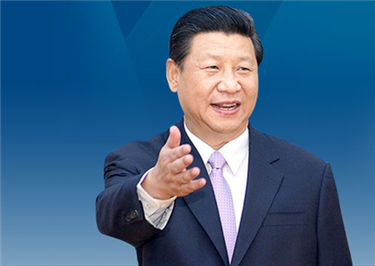Chun Afong (Chen Fang)
Chun Afong (Chen Fang) (1825-1906)
The first Chinese consul in Hawaii
1
A musical titled "13 Daughters" played at the New York City Broadway Theater tells the story of a Chinese who lived in Hawaii in the 19th century. His name is Chun Afong.
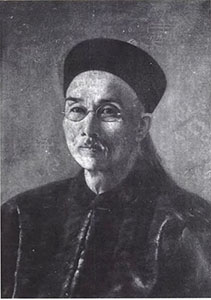
Painting by Hubert Vos in Macao in 1898 [Photo courtesy commons.wikimedia.org]
Hawaii was an independent kingdom in the 19th century.
With the dragon flag of the Qing Dynasty (1644–1912) being raised over Hawaii in March 1880, the Overseas Chinese Business Board -- a semi-official Chinese institution -- was established and Chun Afong was appointed chairman.
The board was upgraded to the Consulate of China in 1881 and Chun was named the first consul of China to Hawaii. He succeeded in making King Kalakaua of Hawaii visit China that year. His tenure lasted nine years.
Chun Afong had been a household name on the island for his "Afong and Achuck Co.", which was among the top eight businesses in Hawaii, and his titles of "merchant prince", "sugar refining giant" and "the richest Chinese merchant".
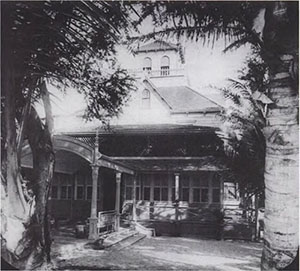
Waikiki villa of Chun Afong. The villa and property was sold in 1904 and a battery was constructed in its place in 1911 [Photo courtesy commons.wikimedia.org]
Americans regarded Afong as a legend. Famous American novelist Jack London wrote a biography of him and female journalist Taylor had her long coverage titled "Legend on Hawaii -- Chun Afong's Family" serialized in a newspaper for 69 days. The musical about Afong has become a repertoire at the Broadway Theater.
2
Chun Afong was born in 1825 in Meixi Village of Qianshan Town, Zhuhai.
The residence with Hawaii architectural style has been listed as a key cultural reserve by the Zhuhai government.
Afong went to Hong Kong and Macao at age 14 to learn to do business from his uncle. He started his business career by helping his uncle to deliver a ship of Chinese goods to Hawaii when he was 24.
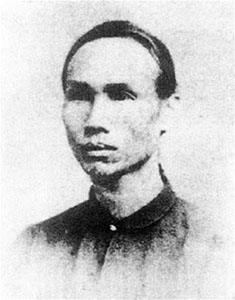
A young Chun Afong [Photo courtesy commons.wikimedia.org]
He learned to speak English and Hawaii dialect in no time. Then he opened a store in Honolulu to sell products "Made in China". He made some money after eight years and he put all of it into sugar industry.
Sugarcane is something Hawaii grows all year round and the yield is 3-or-4-fold of that in Cuba and American southern state Louisiana, both of which are known for sugar production. Afong took the chance to make an enormous fortune when the south of America cut off the sugar supply line to the north during the American Civil War. He became a millionaire -- the richest Chinese merchant in Hawaii.
3
Afong and some other Chinese merchants arranged a wedding party -- the biggest of its kind ever -- for the King of Hawaii in 1856. He decorated the wedding site with Chinese lanterns and danced with his Hawaiian-American wife Julia, which immensely surprised and delighted the newlywed, celebrities and overseas Chinese as well.
Today, one can still see a western-style ballroom at Chun Afong’s former residence in Zhuhai. In his late years, Afong held a family dance party there each time when a friend of him paid a visit to him from abroad.
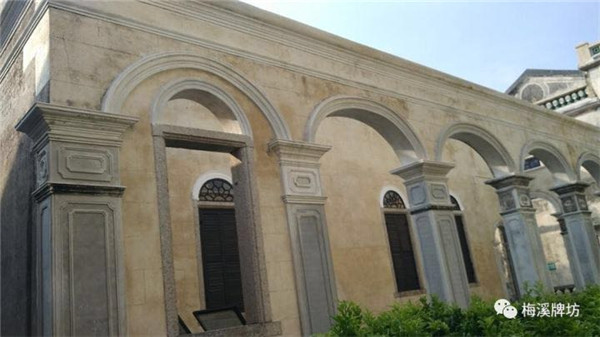
Western-style ballroom [Photo courtesy WeChat ID: zhmeixi002]
Chun Afong brought western culture to his hometown.
4
Chun Afong got married with Julia Fayerweather, a 17-year-old granddaughter of a Hawaiian chief, in Hawaii in 1857, and raised four sons and thirteen daughters. He spent two years building a Chinese-western-featured villa on Waikiki. Taken as one of the prettiest buildings on the island, it has been frequently shown to visitors as "Chun Afong Villa" by tourist guides.
Afong's financial wealth and social status led him to a royal member and consultant of the Privy Council in 1878. He was then the first Chinese aristocracy in the Kingdom of Hawaii.
5
Chun Afong came back to his hometown -- Zhuhai -- at age 65.
He spent heavily in restructuring farming, digging ponds, planting betel palms and promoting coreless pineapples he brought home from Hawaii. He also built schools and ancestral halls, laid water pipes and purchased generators, which allowed Meixi villagers to use tap water and electric lamps for the first time. The 5-kilometre slate road he built leading to Macao greatly facilitated traffic of the townsmen.
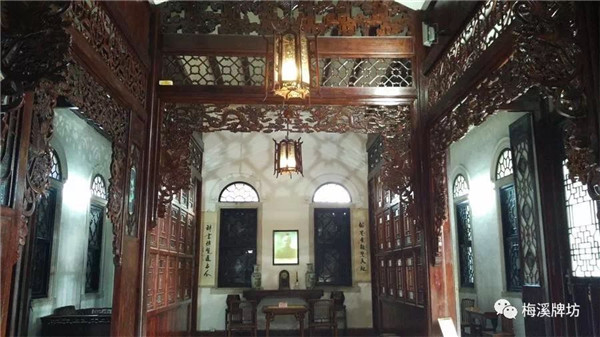
Chun Afong's former residence in Meixi Village [Photo courtesy WeChat ID:zhmeixi002]
Because of his generous donations, Chun Afong was honored by Emperor Kuang-hsu (Guangxu) with the title Leshan Haoshi, meaning “Benevolent and Dedicated to Philanthropy”, carved in the Emperor-bestowed stone archways at his residence. The archways, along with the residence of Afong and the graveyard of his family, have become a frequently visited tourist attraction.
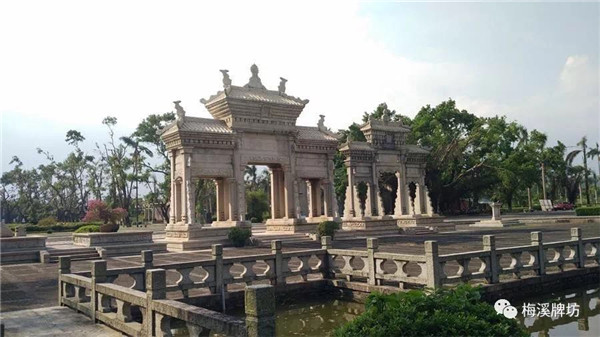
Meixi Royal Stone Archways [Photo courtesy WeChat ID:zhmeixi002]
Zhuhai, with the Chun Afong story, beautiful bays, golden beaches, lush hill forests, zigzag seaside road, graceful resort villas and scenic spots, has won a fame of "Hawaii in China".

